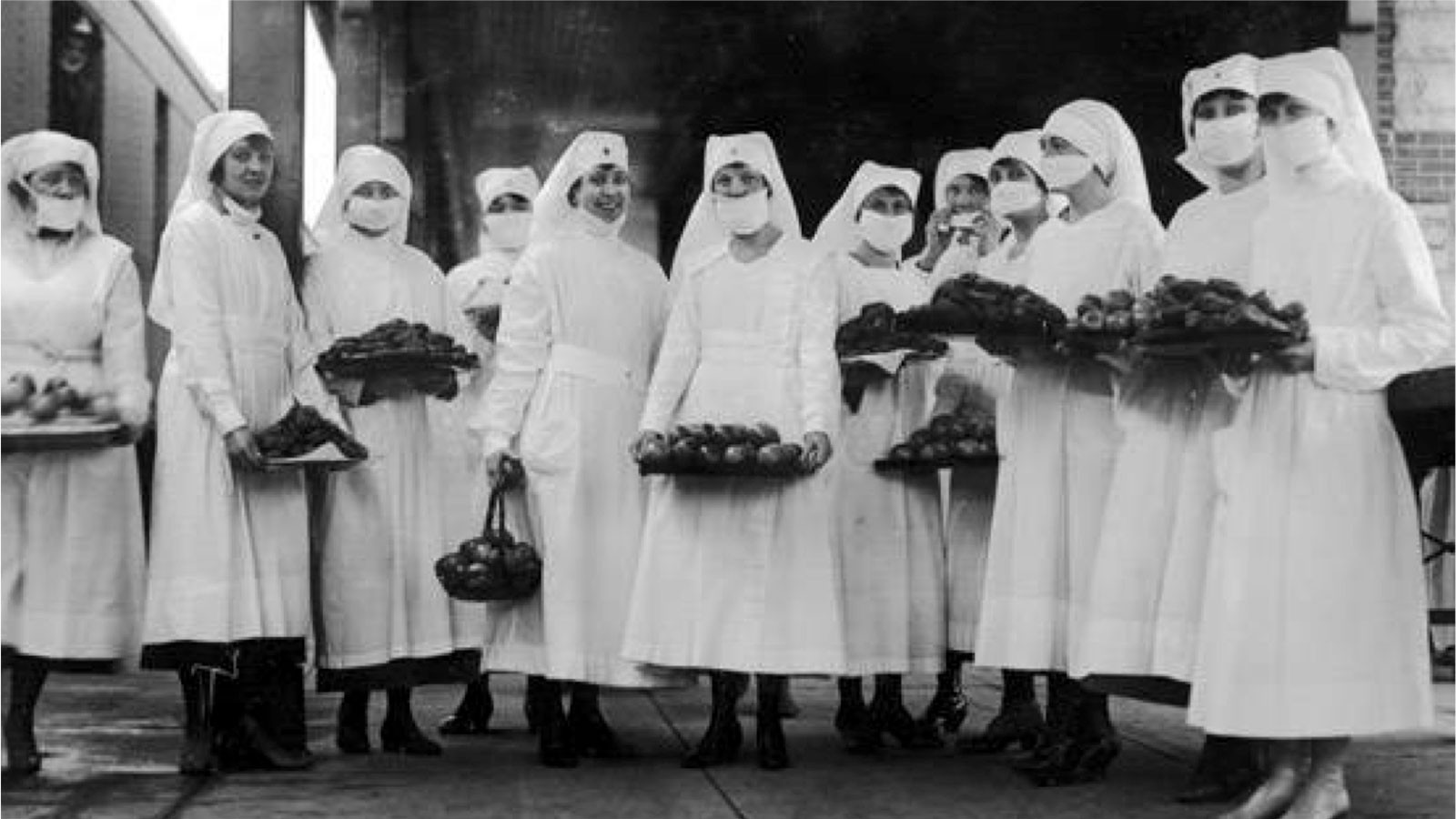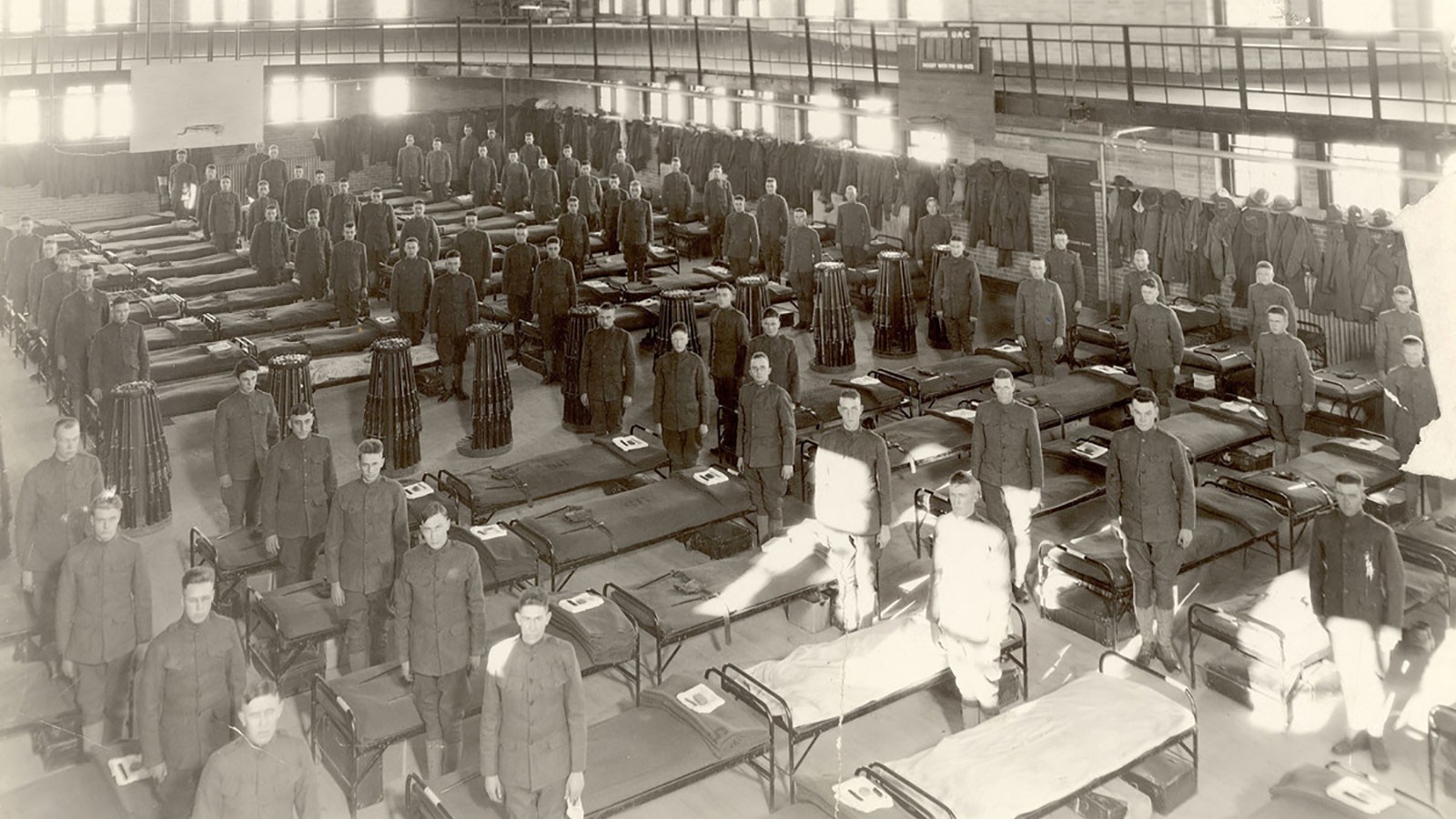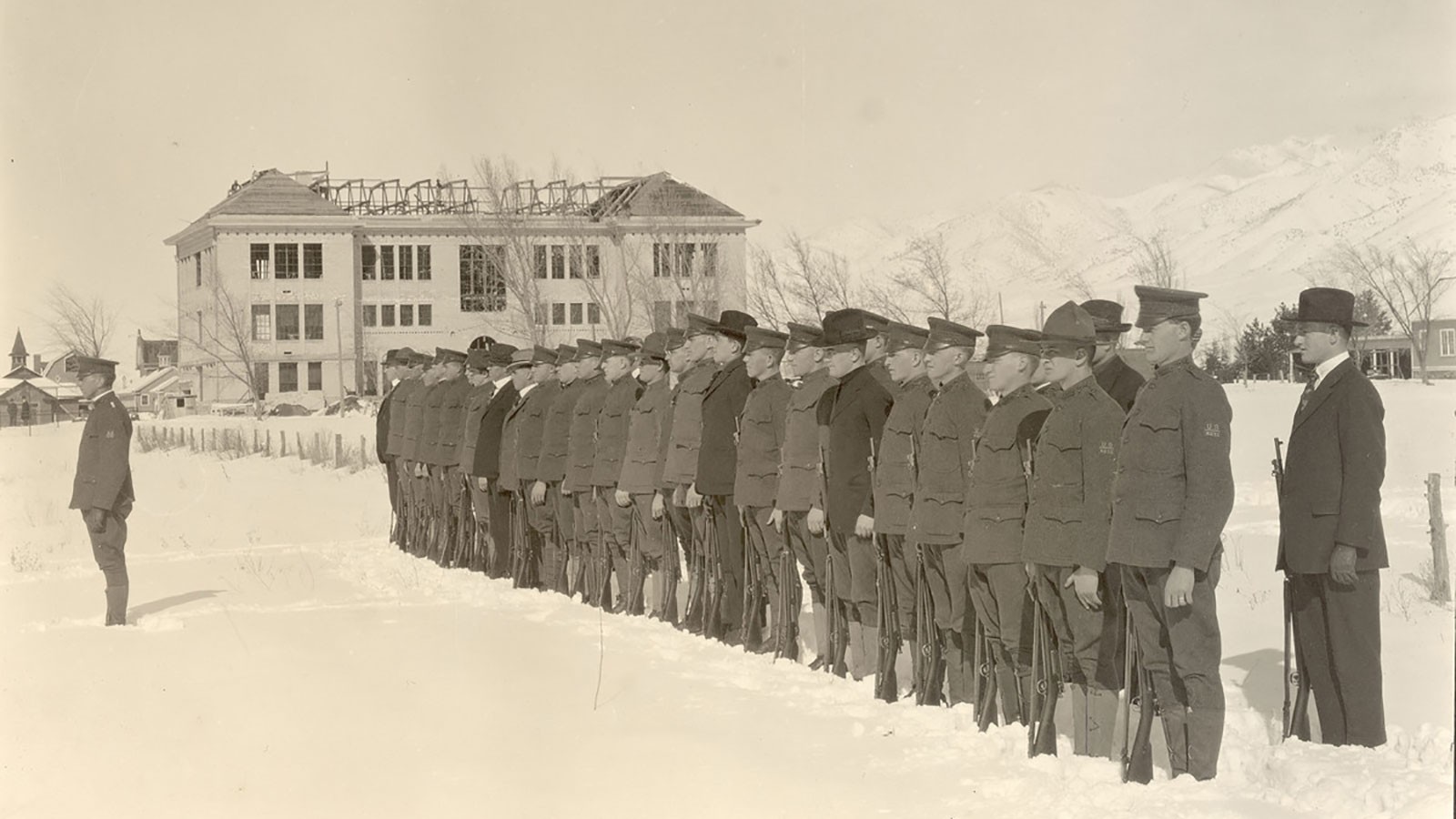Women of USU: Then and Now, 1918: When Old Main Became a Hospital
By Joyce Kinkead |
Red Cross volunteers on the UAC campus, 1919.
Since its earliest days, women at Utah State University have had a huge impact on the cultural, scientific, economic, and social fabric of the institution. The Year of the Woman shares these critical voices simply because their stories matter.
In the summer of 1918, Utah State University—then known as the Utah Agricultural College—began receiving military inductees to train in mechanical arts. Young men from Wyoming, California, and Nebraska arrived to drill on the Quad. Women students organized a Red Cross unit on campus. According to Robert Parson’s Encyclopedic History of Utah State University, students who wished to enlist were organized into the Student Army Training Corps (SATC), which had been dubbed “Safe at the College.”
Actually, the campus was only marginally safer than the Western Front. The influenza outbreak of 1918 was a global epidemic—what is now termed a pandemic-—eventually killing 500,000 in the United States and as high as 20-50 million worldwide. World War I conditions contributed to its spread as troops were crowded together, whether in the trenches or in training at home.
No one was safe. When the influenza outbreak hit the college campus, the south wing of Old Main was converted to a hospital. Phebe Almira Nebeker Peterson, wife of President E. G. Peterson, described the scene.
“Everyone wore masks (a folded piece of gauze across nose and mouth and tied with strings at the back of the head),” Mrs. Peterson said.
A diet kitchen was established by the Home Economics Department with students and faculty working shifts. Although the young soldiers were given “home care,” as Mrs. Peterson related, “their temperatures ran high, and cases of pneumonia developed. Many times the dreaded grey box was carried tenderly out of the north wing of Old Main and slipped into a waiting hearse.”
Although the mortality rates were grim, according to Discover magazine, “the vast majority of the people who contracted the 1918 flu survived.” Unlike today, antibiotics were unavailable. The newspaper from Emmett, Idaho advised in 1918 to combat influenza “by refraining from sneezing, coughing, spitting, or kissing; to avoid crowds; and to avoid worry as it reduces physical resistance.” Sounds very much like contemporary advice to consider social distancing.
When the 1918 Influenza struck Utah State University, the Aggies responded. In 2020, understanding that the campus and community are in “unprecedented times that require unprecedented action,” USU is making the health and safety of its students, staff, and faculty a priority. Once again, USU made its facilities available for isolation accommodation for those who needed them. People in the healthcare sector self-isolated to protect their families. Health and safety remain a top priority for USU’s residence halls and its campuses at large throughout the state.
Sources:
Gunderman, Richard. “10 Misconceptions About the 1918 Flu, the ‘Greatest Pandemic in History.’” Discover, 19 March 2020.
Phyllis Hall, “First Ladies of Utah State University.” 2009.
Robert Parson, Encyclopedic History of Utah State University, 2009. https://digitalcommons.usu.edu/lib_pubs/121/.
Alison Comish Thorne, “Women in the History of Utah’s Land-Grant College.” A paper prepared for the 75th anniversary of Faculty Women’s League, 7 March 1986.
Photographs from USU Merrill-Cazier Library Special Collections and Archives.
Army Training Corps housed in UAC's Smart Gymnasium, 1918.
ROTC military formation on the Quad, 1918.
WRITER
Joyce Kinkead
Professor, Co-Chair
Department of English
435-797-1706
joyce.kinkead@usu.edu
CONTACT
Joyce Kinkead
Professor, Co-Chair
Department of English
435-797-1706
joyce.kinkead@usu.edu
TOPICS
Community 445stories Health 308stories Women 209stories History 139stories Aggies 134stories Year of the Woman 85storiesComments and questions regarding this article may be directed to the contact person listed on this page.











